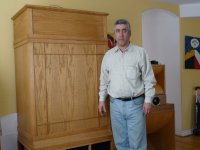Systema do you mind sharing more pictures of your tapped horns? Or plans? Cheers
Here is the link with photos, HornResp model and you can download plans:
Tapped Horns
You'll not believe me, but it cost me 100$ in Russia to build them 🙂
For 300$ I'm going to have another pair in black grand-piano style lacquer 🙂
If you want the ultimate bass, there's no way around a horn sub. Alright, it won't give you 16Hz, but trust me, you won't need it. I think 35Hz is all you really need.
I agree that 35hz is enough for the music I listen to.
Theoretically, the only alternative to horn bass under 50Hz is bass array in sealed boxes.
In this case we can reduce the movement of cone and have more precise bass.
May be I'll experiment in this way later.
I already bought 12" SB drivers with fs=20Hz for this experiment.
If you want the ultimate bass, there's no way around a horn sub. Alright, it won't give you 16Hz, but trust me, you won't need it. I think 35Hz is all you really need.
I've missed picture when I write my previous post, so you have something very serious for bass! Can you, please, share some details ? Length of your horn ? How you folded it ? Drivers ?
I've missed picture when I write my previous post, so you have something very serious for bass! Can you, please, share some details ? Length of your horn ? How you folded it ? Drivers ?
I'll happily give you all the specs if you want to build this behemoth. It is driven by one 18" JBL (2040) A friend of mine has an identical sub and he drives it with a 21" driver. I think that 18" driver resolve the detail better, though. For reference, I'm posting another photo. I'm 6". BTW, there's plenty of residual response below 35Hz.
Attachments
I'm not going digital. I even going to remove digital filter from my DAC. NOS multibit, I/V resistor, Step-Up transformer and tube pre-amp. No op-amps for sure and never any digital alchemy 🙂
I had all best DACs of high-end industry including latest designs, but end up with this solution as purest and most resolving!
I would seriously rethink that. I used to be a staunch believer in the same dogma; vinyl and multibit DACs (even had around half dozen various PCM63/1702/1704 DACs with different output stages). The benefits of digital crossovers with time alignment, impulse response, integration and correcting bass problems inherent to every room will give you much better detail and natural tone which far outweighs any minute differences between DACs. There are also really nice sounding multichannel DACs out now.
GOTO already advocate using active crossovers, it will probably only be matter of time before they switch to digital.
I'm not going digital. I even going to remove digital filter from my DAC. NOS multibit, I/V resistor, Step-Up transformer and tube pre-amp. No op-amps for sure and never any digital alchemy 🙂
I had all best DACs of high-end industry including latest designs, but end up with this solution as purest and most resolving!
I'm sorry I am a bit confused. You say you are not going digital but in same sentence you say you are removing the digital filter in your DAC?
Would it not seem to introduce the least noise and loss of detail of the filtering were done when the music is still in zeros and ones after the source (a high Rez file?) but before the DAC even?
Having the ability to digitally time align before signals go analog has a lot of benefits on realism and avoids having to physically move and adjust speaker relative positions down to mm accuracy.
If your source was indeed vinyl or reel-to-reel tape - then sure, staying purely all analog is something great to aim for.
But if starting with a high rez bit stream, you have already let the genie out of the bottle. 🙂
I would seriously rethink that. I used to be a staunch believer in the same dogma; vinyl and multibit DACs (even had around half dozen various PCM63/1702/1704 DACs with different output stages). The benefits of digital crossovers with time alignment, impulse response, integration and correcting bass problems inherent to every room will give you much better detail and natural tone which far outweighs any minute differences between DACs. There are also really nice sounding multichannel DACs out now.
GOTO already advocate using active crossovers, it will probably only be matter of time before they switch to digital.
I don't think that good multichannel dac exists and I don't have possibility to get another amp suitable for me, so I'm not going with digital crossovers.
I support the purist approach to system design because it is a truly creative act and the development of workarounds either educates the designer or produces innovation, +its fun to surprise people with unconventional technology producing excellent sound.
If SystemaMurata is pursuing non-oversampling DAC's why not go last level with the Lavry AD122 96-MKIII?
As far as reducing/simplifying crossovers I can get behind that, although XRk971 makes a good point that if digital source is already in use, why not consider doing crossover work at the source? Digital crossovers at 96khz with 80bits precision can be pretty transparent unless you have a bats ears.
In my own work, I prioritize by:
1) can I accomplish it with physics
2) can I accomplish it with analog electronics
3) can I accomplish it with dsp
Each one of these processes creates artifacts.For example, we could use physics to produce a LPF in a speaker design, but often the change introduces serious resonances in a nearby frequency range. In such a case, it's better to look to options #2 and #3 as the amount of resonance/ripple will be many times less.
An example of DSP winning its place comes from ElectroVoice's David Gunness. He designed a clever DSP algorithm to pre-process signals going into compression drivers to cancel out a type of predictable distortion. The result (for PA systems) is a much more accurate loud-speaker.
cheers.
If SystemaMurata is pursuing non-oversampling DAC's why not go last level with the Lavry AD122 96-MKIII?
As far as reducing/simplifying crossovers I can get behind that, although XRk971 makes a good point that if digital source is already in use, why not consider doing crossover work at the source? Digital crossovers at 96khz with 80bits precision can be pretty transparent unless you have a bats ears.
In my own work, I prioritize by:
1) can I accomplish it with physics
2) can I accomplish it with analog electronics
3) can I accomplish it with dsp
Each one of these processes creates artifacts.For example, we could use physics to produce a LPF in a speaker design, but often the change introduces serious resonances in a nearby frequency range. In such a case, it's better to look to options #2 and #3 as the amount of resonance/ripple will be many times less.
An example of DSP winning its place comes from ElectroVoice's David Gunness. He designed a clever DSP algorithm to pre-process signals going into compression drivers to cancel out a type of predictable distortion. The result (for PA systems) is a much more accurate loud-speaker.
cheers.
I'm sorry I am a bit confused. You say you are not going digital but in same sentence you say you are removing the digital filter in your DAC?
Would it not seem to introduce the least noise and loss of detail of the filtering were done when the music is still in zeros and ones after the source (a high Rez file?) but before the DAC even?
Having the ability to digitally time align before signals go analog has a lot of benefits on realism and avoids having to physically move and adjust speaker relative positions down to mm accuracy.
If your source was indeed vinyl or reel-to-reel tape - then sure, staying purely all analog is something great to aim for.
But if starting with a high rez bit stream, you have already let the genie out of the bottle. 🙂
There are so many concepts in audio...so many paths...everyone is choosing his own. Mine is - minimal influence to the signal from the beginning to the end. So, it is non-oversampling, filterless, multibit (because I have 44/16 content only) and shortest way out without op-amps. I'll share more details later about DAC.
I support the purist approach to system design because it is a truly creative act and the development of workarounds either educates the designer or produces innovation, +its fun to surprise people with unconventional technology producing excellent sound.
If SystemaMurata is pursuing non-oversampling DAC's why not go last level with the Lavry AD122 96-MKIII?
As far as reducing/simplifying crossovers I can get behind that, although XRk971 makes a good point that if digital source is already in use, why not consider doing crossover work at the source? Digital crossovers at 96khz with 80bits precision can be pretty transparent unless you have a bats ears.
In my own work, I prioritize by:
1) can I accomplish it with physics
2) can I accomplish it with analog electronics
3) can I accomplish it with dsp
Each one of these processes creates artifacts.For example, we could use physics to produce a LPF in a speaker design, but often the change introduces serious resonances in a nearby frequency range. In such a case, it's better to look to options #2 and #3 as the amount of resonance/ripple will be many times less.
An example of DSP winning its place comes from ElectroVoice's David Gunness. He designed a clever DSP algorithm to pre-process signals going into compression drivers to cancel out a type of predictable distortion. The result (for PA systems) is a much more accurate loud-speaker.
cheers.
6-way digitally crossovered system ? Six 4-block DACs with six pairs of GM-70 SETs ?
No, thank you 🙂
Couple of capacitors with few inductors are working quite well 🙂
I'll happily give you all the specs if you want to build this behemoth. It is driven by one 18" JBL (2040) A friend of mine has an identical sub and he drives it with a 21" driver. I think that 18" driver resolve the detail better, though. For reference, I'm posting another photo. I'm 6". BTW, there's plenty of residual response below 35Hz.
Great, thank you! It is interesting to evaluate the possibility of using this construction for my system. Is it possibly to modify it to use with 4" throat GOTO 146LD ?
I think it is perfect idea to try to implement subBass with GOTO 146LD.
Another interesting idea is here:
http://inlowsound.weebly.com/spiral-bass-horn-updated.html
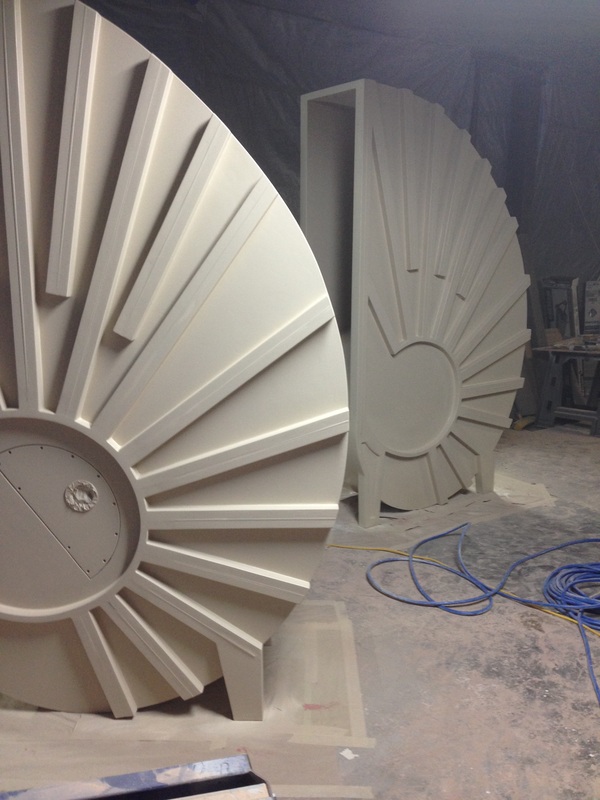
http://inlowsound.weebly.com/spiral-bass-horn-updated.html

An externally hosted image should be here but it was not working when we last tested it.
I have tried shorter version of 270Hz LeCleach and very happy with the result.
With long version I had some mods on piano notes and now it is competely clean.
Before:
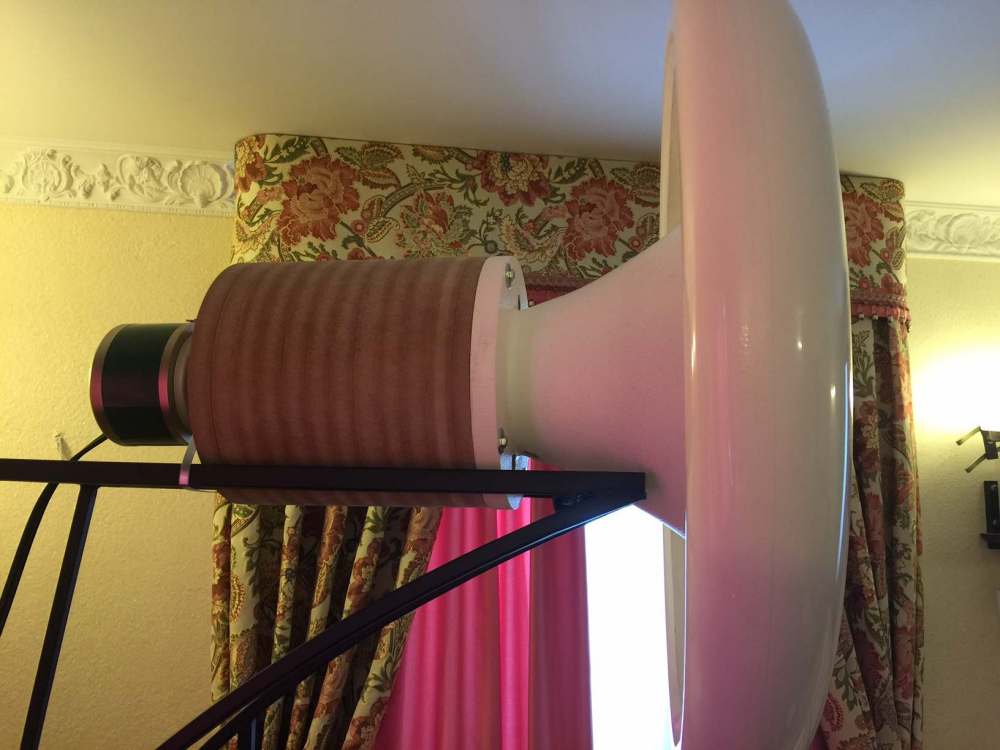
After:
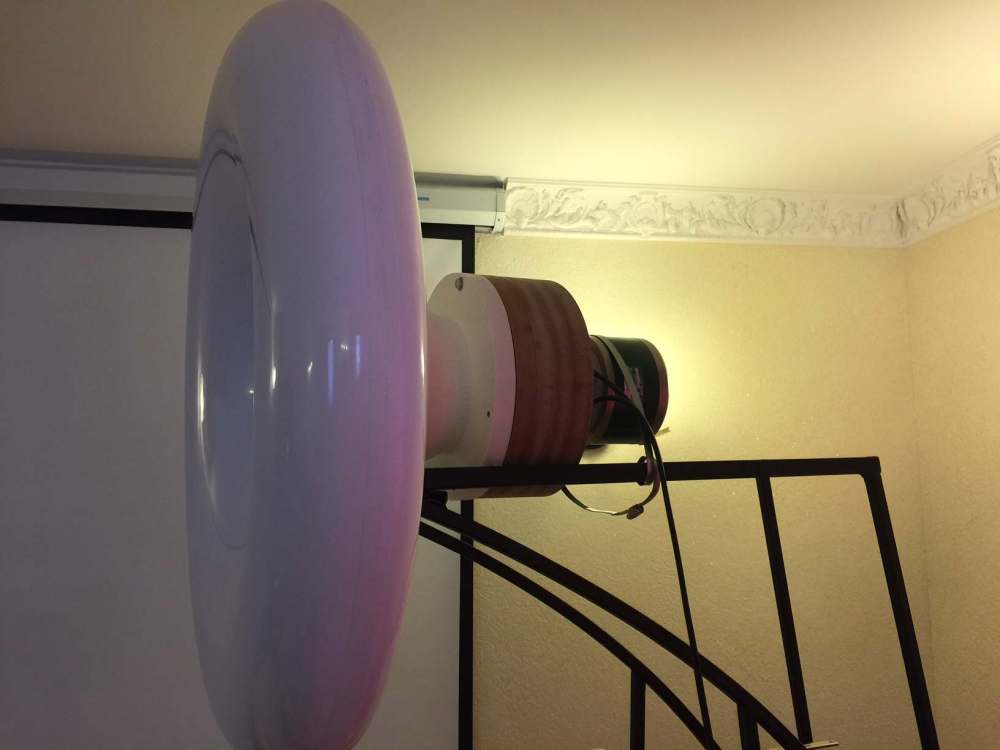
With long version I had some mods on piano notes and now it is competely clean.
Before:

After:

Looks great. What Ale driver is that ? how does it compare to Goto ?
This is GOTO SG-505TT !
I was lucky to find GOTO SG-570BE with beryllium diaphragm, so when it arrives, I replace 505 with it!
Nice SystemaMurata,
Mister Tanaka will be happy.
http://www.diyaudio.com/forums/multi-way/142723-my-diy-5-way-active-horn-system.html#post1810184
Br Walter
Mister Tanaka will be happy.
http://www.diyaudio.com/forums/multi-way/142723-my-diy-5-way-active-horn-system.html#post1810184
Br Walter
Nice SystemaMurata,
Mister Tanaka will be happy.
http://www.diyaudio.com/forums/multi-way/142723-my-diy-5-way-active-horn-system.html#post1810184
Br Walter
This looks really great 🙂
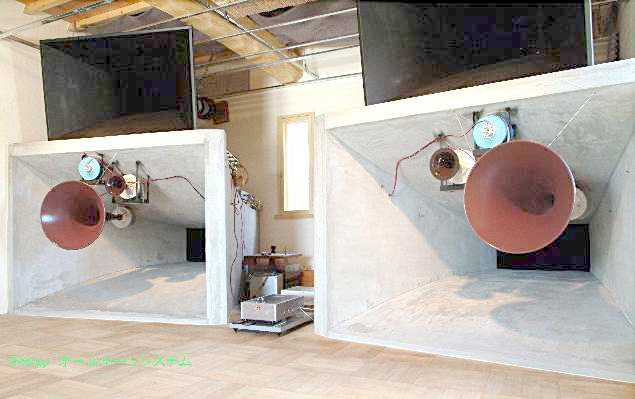
This is mine :
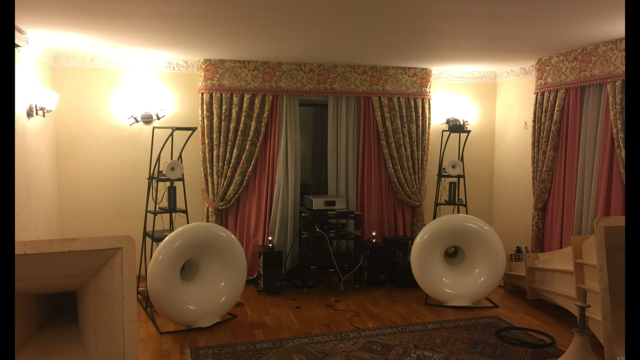
RAAL is replaced by GOTO SG-16TT and mid-low channel is already on top, so need to update photo 🙂
Last edited:
How high does the SG-16TT extend?
After all I've returned RAAL back!
SG-16TT covers 7-14kHz and RAAL works from 14kHz.
So, now my system is 7-way 🙂
At current stage, I'm very happy with 3-way HF covered by SG-370DX + SG-16TT + RAAL. Violins and top octaves of piano sounds fantastic!
Sound is full of brilliance!
MF and LF can't reach that level of transparancy for now, so I'll continue to experiment with different horns for SG-505TT and SG-146LD.
I've also found GS-505BE with berillium diaphragms...very interesting to compare with standard 505TT.
This looks really great 🙂

This is mine :

RAAL is replaced by GOTO SG-16TT and mid-low channel is already on top, so need to update photo 🙂
Have you ever tried having the sub horns fire into the floor - of course with enough space to create a mouth of appropriate size? I had great results with floor firing horns - subs and simply bass.
- Home
- Loudspeakers
- Multi-Way
- GOTO 6-way TimeAligned Horn System
